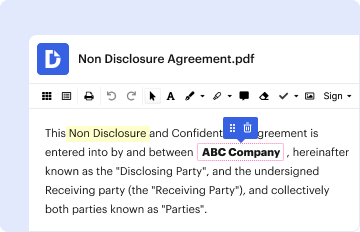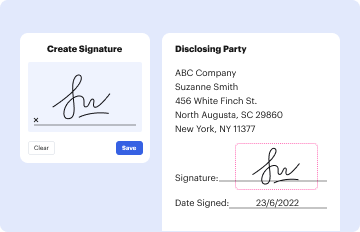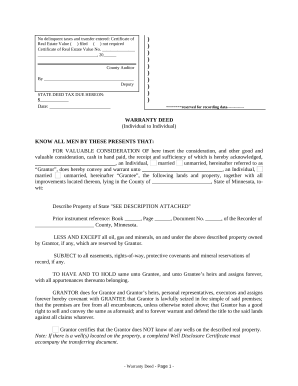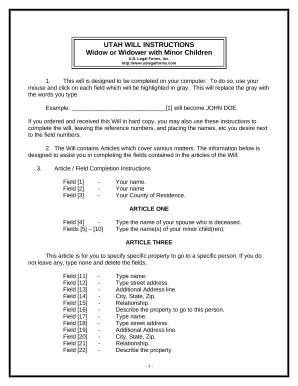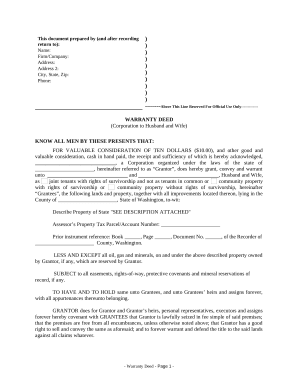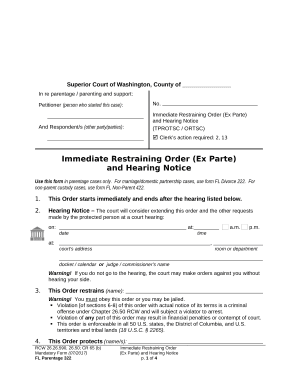Definition and Purpose of Occupational Therapy Evaluation
An Occupational Therapy Evaluation (OT evaluation) is a comprehensive assessment aimed at understanding a patient's functional abilities and limitations across various daily living activities. The primary goal of this evaluation is to identify specific strengths and needs of the individual, thereby guiding the development of a tailored therapy plan. This form includes essential patient information, including identifying details, the reason for referral, and assessments of mobility, strength, and cognitive function. Through this evaluation, occupational therapists can determine the appropriate interventions and support needed to enhance a patient’s independence in daily tasks.
Key components of an OT evaluation typically include:
- Patient Identification: Gathering demographic information to contextually place the individual within the therapy framework.
- Referral Reason: Specifying the context which led to the evaluation, often including a description of issues faced in daily living.
- Functional Assessments: Measuring aspects such as mobility, sensory integration, and cognitive processing to formulate a complete picture of the patient's needs.
How to Conduct an Occupational Therapy Evaluation
Conducting an OT evaluation requires a systematic approach to ensure a thorough understanding of the patient’s capabilities. The process involves several key steps:
- Preparation: Before the evaluation, collect necessary documents, such as referrals and medical histories, to provide context.
- Initial Interview: Engage the patient (and their family, if appropriate) to understand their subjective experiences, concerns, and goals.
- Standardized Assessments: Utilize various standardized tools and observation methods to assess functional abilities accurately.
- Data Documentation: Record all findings meticulously, making sure to capture the diverse aspects of the patient’s functionality and limitations.
- Collaborative Goal Setting: Based on evaluation findings, establish clear, achievable goals with the patient to guide therapy.
This structured approach ensures that all relevant aspects of the patient's functional abilities are assessed, allowing for a comprehensive treatment plan to be developed.
Key Elements of an Occupational Therapy Evaluation
Several key elements are essential to include in any OT evaluation to ensure it is both comprehensive and effective. Each component provides crucial insights into different aspects of the patient’s capabilities and needs:
- Level of Assistance Required: Assess how much support a patient needs to perform daily activities, noting varying levels of dependence and independence.
- Adaptive Equipment: Identify necessary tools or modifications that can facilitate the patient's independence in daily tasks.
- Strength Assessment: Evaluate strength in various muscle groups to assess physical capabilities relevant to the patient’s goals.
- Mobility Assessment: Examine the patient’s ability to move independently and assess any assistive devices that may be needed.
- Cognitive Function Assessment: Determine cognitive strengths and weaknesses, identifying potential barriers in understanding instructions and completing tasks.
Collectively, these elements help form a complete profile of the patient’s capabilities, guiding subsequent occupational therapy interventions.
Who Uses the Occupational Therapy Evaluation?
Occupational Therapy Evaluations are commonly used by a variety of professionals, including:
- Occupational Therapists: They are the primary users, utilizing the evaluation to design and implement individualized treatment plans.
- Physicians: Doctors may recommend evaluations for patients who exhibit functional limitations or require rehabilitation after injury.
- Schools and Educators: In educational settings, occupational therapists may conduct evaluations for children with disabilities to develop individualized education plans (IEPs).
- Rehabilitation Facilities: In these environments, OT evaluations are essential for determining the rehabilitation needs of patients recovering from surgery, trauma, or illness.
Understanding the diverse users of the OT evaluation highlights its importance in various sectors, from healthcare to education.
Legal Use of Occupational Therapy Evaluation
Occupational Therapy Evaluations must align with specific legal and regulatory standards, ensuring they are conducted ethically and responsibly. Key legal considerations include:
- Informed Consent: Obtaining informed consent from the patient or guardian prior to conducting an evaluation is crucial. This ensures that individuals understand the evaluation process and its implications.
- Documentation Standards: Accurate and thorough documentation of the evaluation process and results is necessary for compliance with professional regulations and for ongoing patient care.
- Confidentiality: Protecting the patient's privacy and ensuring that all documentation adheres to HIPAA guidelines is essential for legal compliance.
Adhering to these legal standards protects both the practitioners and patients involved in the evaluation process.
Examples of Occupational Therapy Evaluation Applications
Occupational Therapy Evaluations can be applied in various scenarios to enhance patient outcomes. Here are a few practical examples:
- Post-Surgical Rehabilitation: For a patient recovering from hip replacement surgery, an OT evaluation can identify specific mobility challenges and tailored interventions to regain independence in daily activities, such as dressing and bathing.
- Pediatric Assessments: In a school setting, an evaluation for a child with developmental delays might reveal specific sensory processing issues that require targeted therapeutic strategies to improve engagement with peers.
- Geriatric Assessments: For older adults, evaluations can focus on fall risks and strategies to adapt the home environment, enhancing safety and autonomy in daily living.
These scenarios illustrate the diverse applications of OT evaluations across different age groups and conditions, emphasizing their integral role in therapy planning.
Importance of Occupational Therapy Evaluation
Occupational Therapy Evaluations are critical for several reasons:
- Individualized Care: They establish a tailored approach to therapy, as insights gained from evaluations inform customized treatment plans.
- Goal Identification: Evaluations help clarify patient goals, ensuring that therapy aligns with individual needs and aspirations.
- Outcome Measurement: Regular evaluations provide a framework to assess progress over time, facilitating necessary adjustments in the treatment plan.
- Interdisciplinary Collaboration: Evaluations enhance communication among various healthcare professionals, ensuring a holistic approach to patient care.
Recognizing the importance of OT evaluations emphasizes their role in delivering effective and responsive healthcare, ultimately leading to improved patient outcomes.

